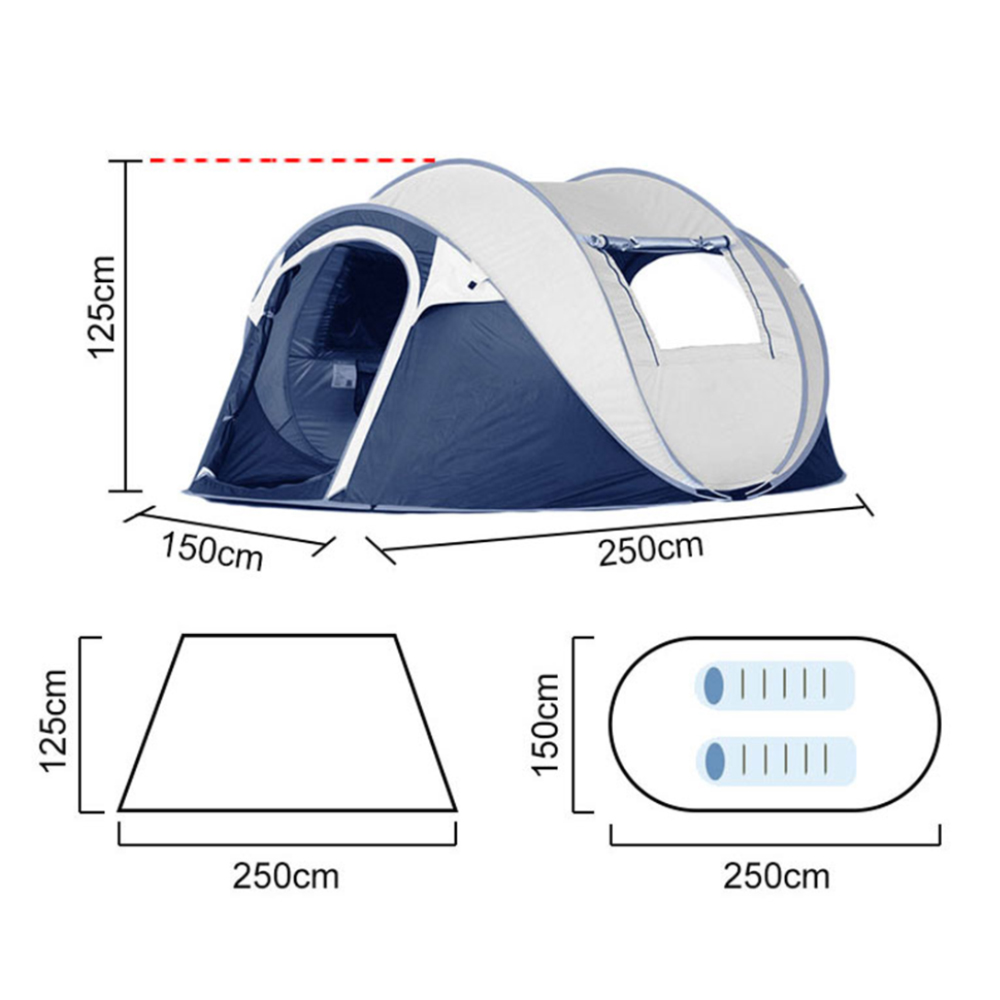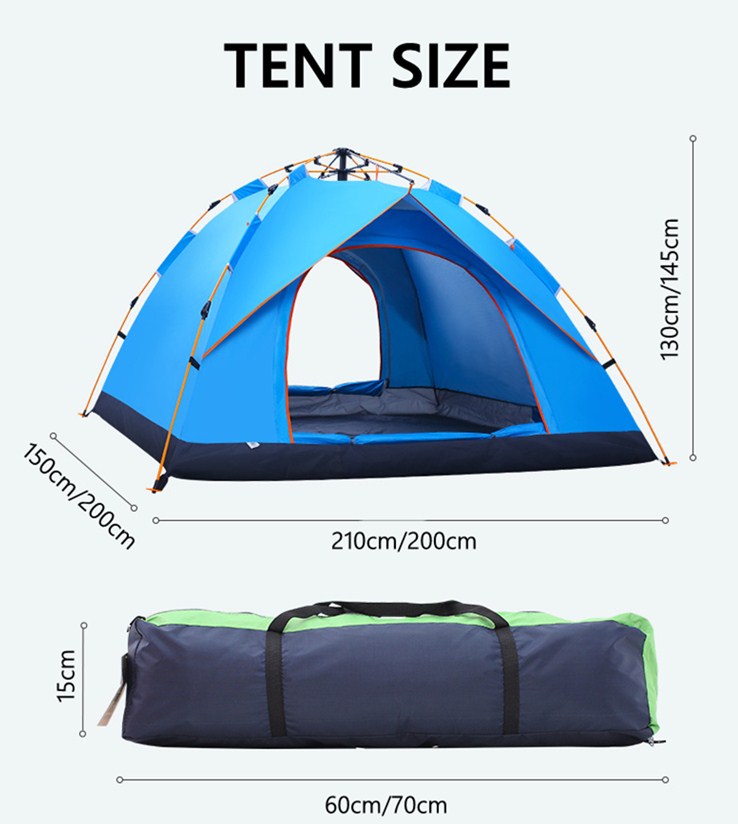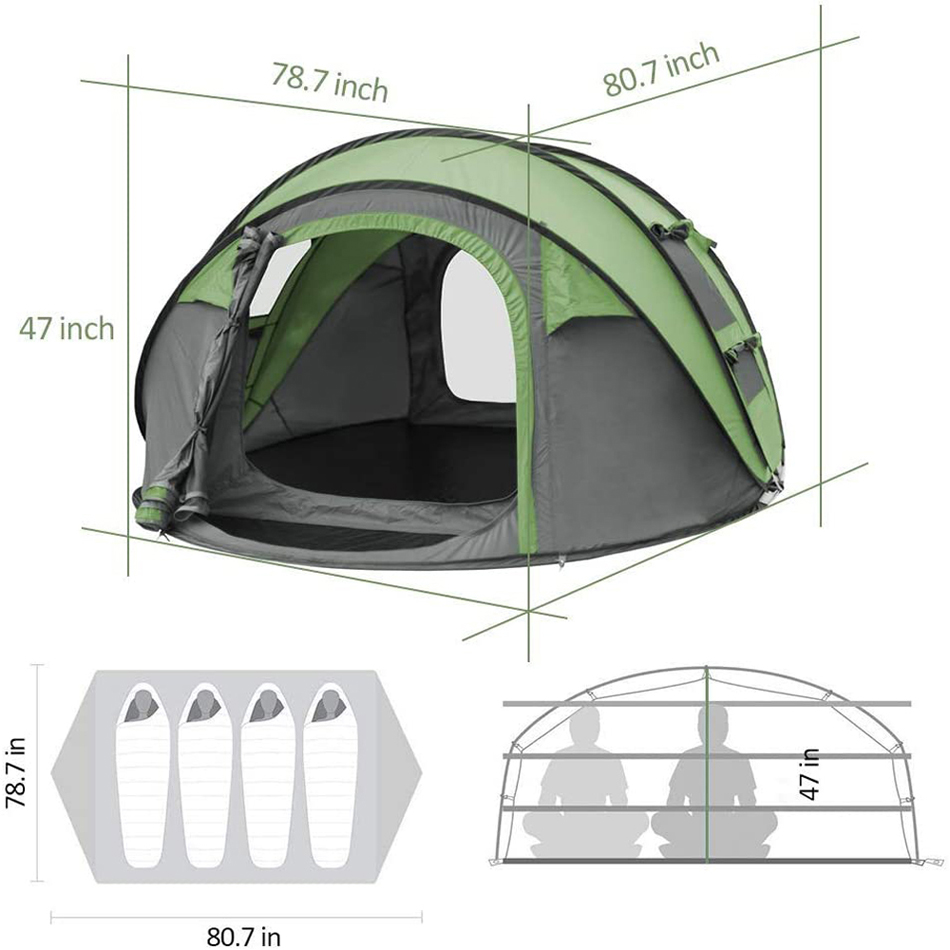Tents generally include: single tents and double tents. Two-person tents are the most used, followed by single-person tents, and three-four-person tents, but they are basically not used. In terms of size, the height generally ranges from 0.8m to 1.1m, the length and width of a single person varies from 2mx1.2m, and the width of a double person is wider. The commonly used outdoor 4-corner tents are generally 2.4×2.1×1.35m in size. In addition, there are 2*2m, 2*3m, 3*3m, 3*4.5m, 2*6m, 3*6m and other specifications. The commonly used outdoor four-corner tent is shaped like an independent small tiled house. The support is usually four corners and four pillars and a structural ridged roof. This kind of tent is generally taller and relatively heavy, suitable for motorists or relatives. It is used in camping for fixed field work, so it is called the vehicle-mounted tent.
It is very important to consider the size of the tent you carry when you go out camping and outdoor activities. The size is small enough to sleep or not comfortable enough, and the large size wastes luggage space. If you are not traveling by car, it is still tiring to set up a tent, so choose the tent size. The following issues need to be considered:
1. Width of the tent
From our point of view, the shoulder width of Asian men is generally about 44cm, for women it is about 40cm, sitting height is 90.8cm for men and 85.5cm for women. Usually, when resting, 2.5 times the width of the shoulder width can ensure the comfort when lying down, but for a hiking tent, it is impossible to sleep so luxuriously regardless of the weight of the tent, so you must ensure that it can be smooth in the sleeping bag Turning over, the width of 60CM is almost a limit value. For most tents, the side walls are inclined rather than vertical. If the body is not close to the side walls, the width must reach 80 cm. Therefore, it can be said that the width of the bottom of a relatively comfortable single tent is between 80-90cm. For double tents, since there is a common space, the width is between 120-140cm.
2. The length of the tent
The consideration of length is not just a consideration of height. You must calculate the wasted head and tail dimensions of the sloping bottom. In addition, if you want to stack backpacks or equipment in the tent, you must have extra length to use it. In this way, 200-220cm is a reasonable value.
3. The size of the tent space
We can see some very clever tent designs that pull the bottom edge perpendicular to the ground to maximize the use of space without adding weight. For example, this spring 2 tent of Himalaya has high-angle pre-curved tent poles. The height of the tent bottom increases and the space is increased. It is easier to move the head and feet after lying down.
4. Tent height
Height is a data that needs to be carefully considered. Generally speaking, a higher inner tent means a larger space for activities and also means a weakening of wind resistance and an overall increase in weight. However, if a tent can’t even guarantee the space to sit up and wear clothes, it is really exciting. It is difficult to be comfortable.
At the same time, due to the difference in structure, the height of 100cm in the dome tent can make people feel comfortable. In tunnel tents or roof tents, this height may still make you very depressed. After sitting up, you feel that your head is wrapped in the inner tent. In the smart tent design, a multi-purpose beam is often placed on the seated head in order to allow you to have sufficient head movement space after sitting up.




As a professional camping tent manufacturer, we also warmly welcome OEM and ODM orders. We also can custom size of the tent as you required. If you are interested in the camping tent, please feel free to contact us at any time!
